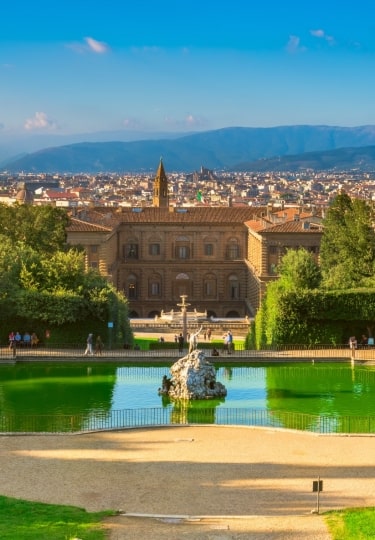It was amid the lush gardens in Italy, during the Renaissance, that the paradigm shift occurred from using these green spaces for practical cultivation to seeing them as a place for pleasure and sensory enjoyment.
Of course, everything in Italy begins with the Romans, and it was from these hallowed ancestors that the Renaissance gardeners drew their inspiration. In came formality, symmetry, the use of statues, fountains, and other splashy points of interest.
Add vast wealth, patrons with even bigger egos, and ingenious landscape designers, and you have a country blessed with a profusion of spellbinding estates. Often attached to immense villas, these rarified places are beloved by a country renowned for its appreciation of great design.
Here are 11 famous Italian gardens to explore.
Boboli Gardens, Florence
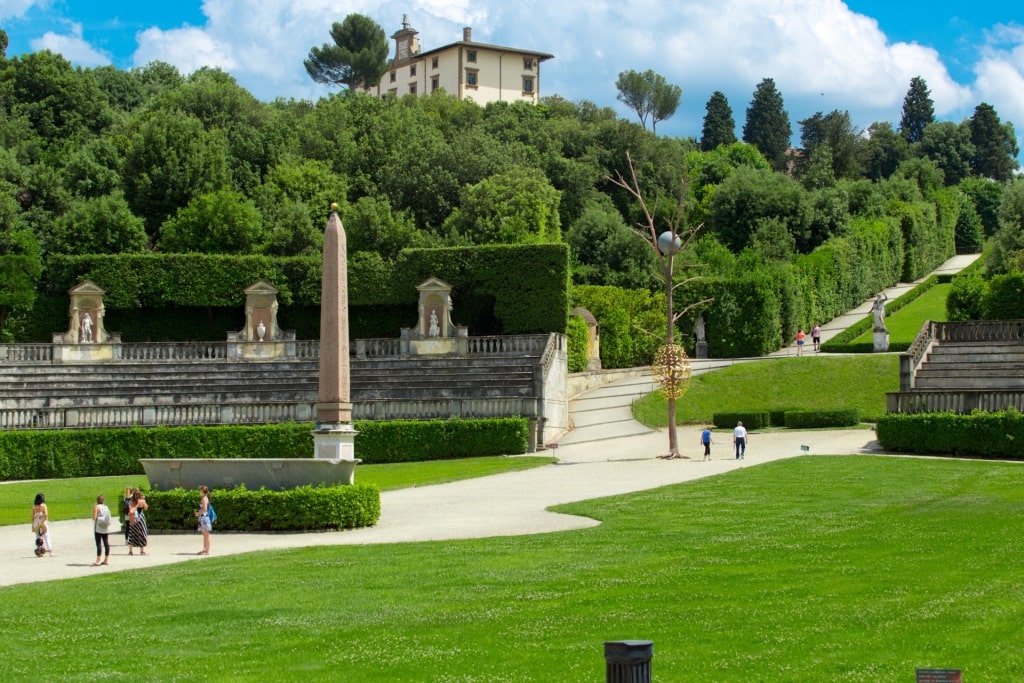
Boboli Gardens, Florence
Now home to the famous Uffizi Gallery, the stately Pitti Palace was originally the seat of the powerful Medici family in medieval Florence. As such, its Boboli Gardens are awe-inspiring—111 acres of immaculate privet hedges, grand galleries of statuary, cascading fountains, and the ever-present scent of roses.
Reputedly the inspiration for the Gardens of Versailles, Boboli was commissioned in 1594 by Cosmo Medici I. Its completion saw some of this period’s greatest architects—such as Vasari, Ammannati, and Buontalenti—moonlight as landscape gardeners.
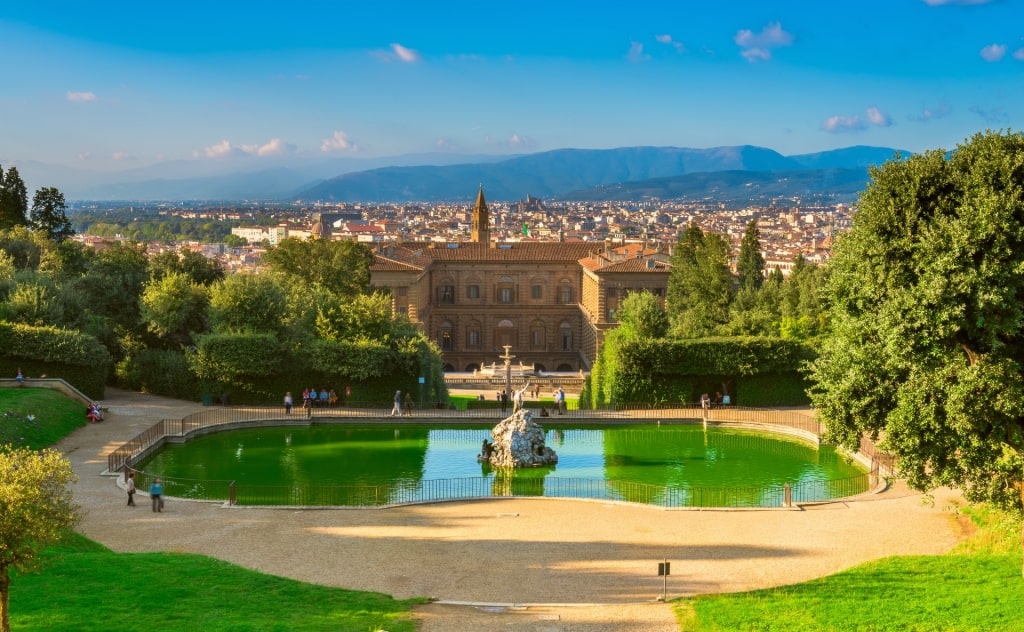
Neptune Fountain in Boboli Gardens, Florence
One of the very first Italian gardens, Boboli is a landscape with nature yoked in strict obedience to the design. Throughout you’ll find accents with frequent mythological references such as the grand Neptune’s Fountain. This being Florence, Boboli is also something of a sculpture park, with impeccable credentials.
While you’re strolling its grand pathways, look out for the Giardino del Cavaliere, just after the pond, the walls of which were built by Michelangelo in 1529. Giambologna’s famous Bathing Venus is another must-see piece of art in Florence, housed within the Buontalenti Grotto.
Read: Two Days in Florence
Public Gardens of Taormina, Sicily
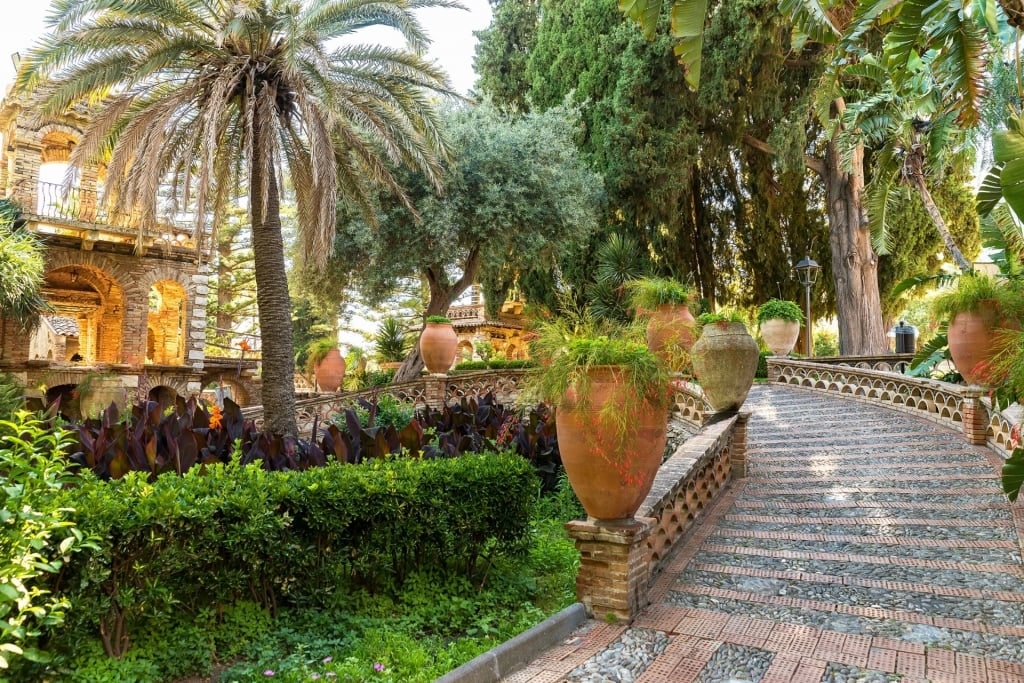
Public Gardens of Taormina, Sicily
The Public Gardens of Taormina (or simply the ‘Villa” to the locals) is the principal green lung of this quintessential Sicilian resort town. The gardens mainly comprise the grounds belonging to what is now the Villa Communale lodged at its heart.
Previously the residence of Lady Florence Trevelyan, an emigree from the British Isles rumored to have had an affair with the future king of England, this much gossiped about Scottish noblewoman was also a keen gardener. You can admire her work on the islet of
Isola Bella (her former residence) and, on a much grander scale, within the villa grounds.
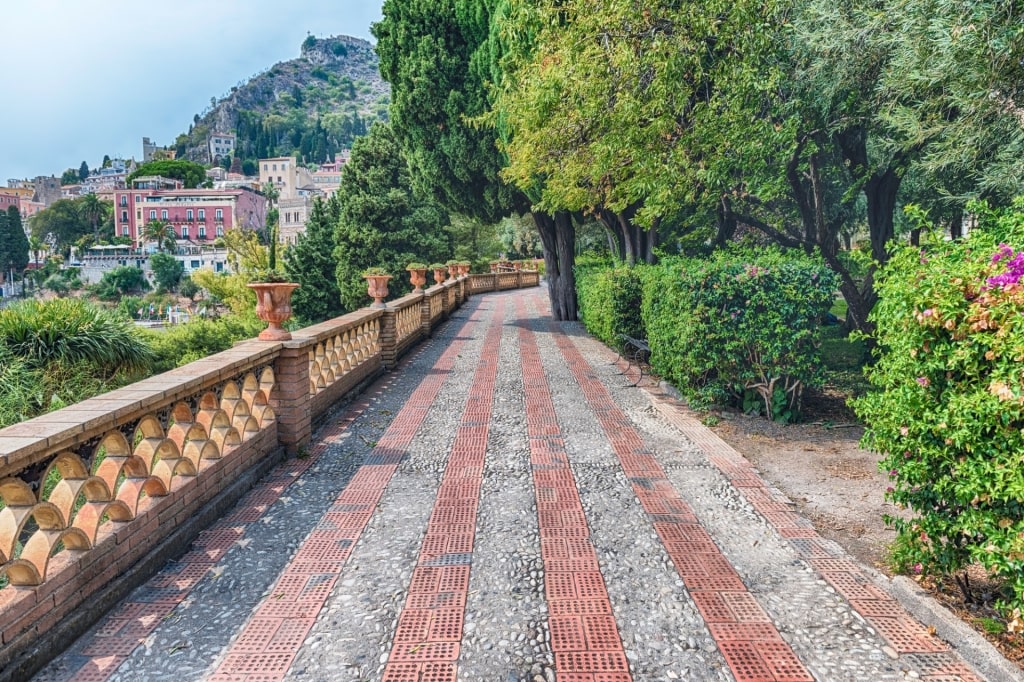
Public Gardens of Taormina, Sicily
Once you’ve found your way off the compact Taormina streets and onto the garden’s striped paths, it comes as a surprise how large this park really is. It’s a wonderfully shady place to seek respite from the Italian summer sun and the crowds browsing the boutique windows on Corso Umberto.
Among this English Garden’s most distinctive features are the eastern-inspired follies that emerge from between the umbrella pines and billowing bougainvillea. However, as with Isola Bella, the plants found here are a blend of the indigenous and the exotic imported by Lady Trevelyan.
Perched high above the Sicilian coastline the park also enjoys sweeping views over the brilliant blue of the Bay of Naxos and distant, smoking Mount Etna.
La Mortella, Ischia Island
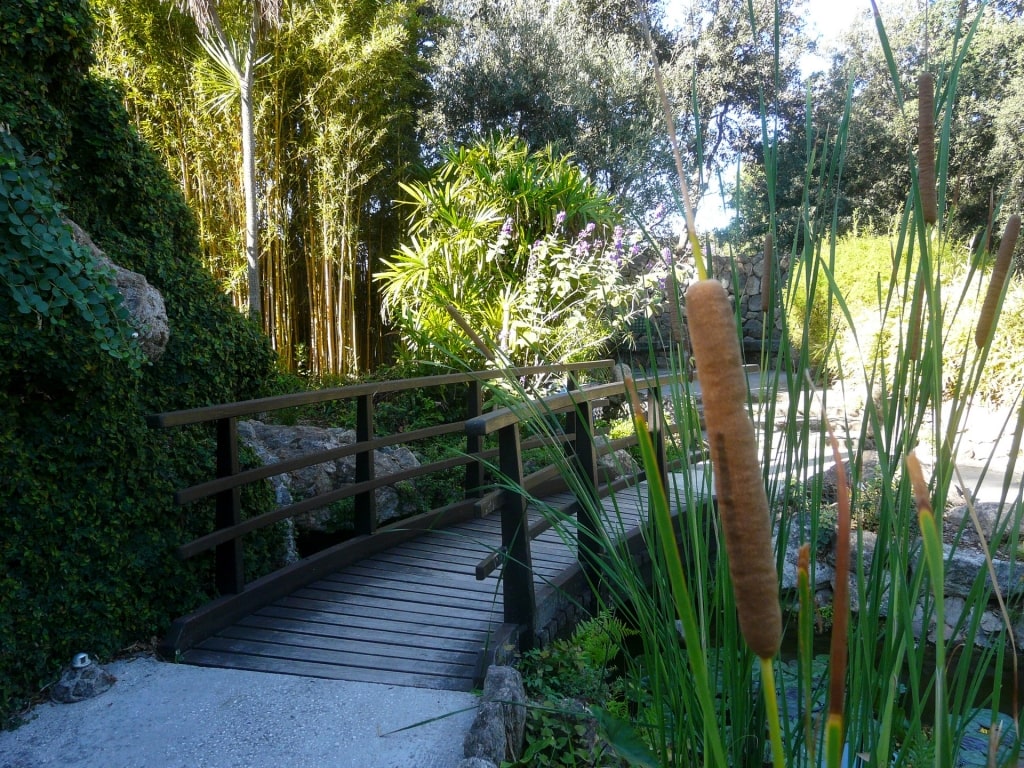
La Mortella, Ischia Island
Hop on a ferry from Naples to Ischia’s La Mortella, and you’d be forgiven for thinking you’d accidentally landed in the Amazon. La Mortella, one of the region’s most famous gardens, is a riot of tropical color and rare plantings.
Designed by the renowned landscape architect Russell Page, La Mortella was created from the ingenious brief drawn up by his Argentinian benefactor, Lady Susana Walton. Today, that vision exists in glorious verdancy set amid Ischia’s volcanic rocks, with glinting, jewel-like lotus flowers, feathery oriental maples, and fleshy aloe vera.
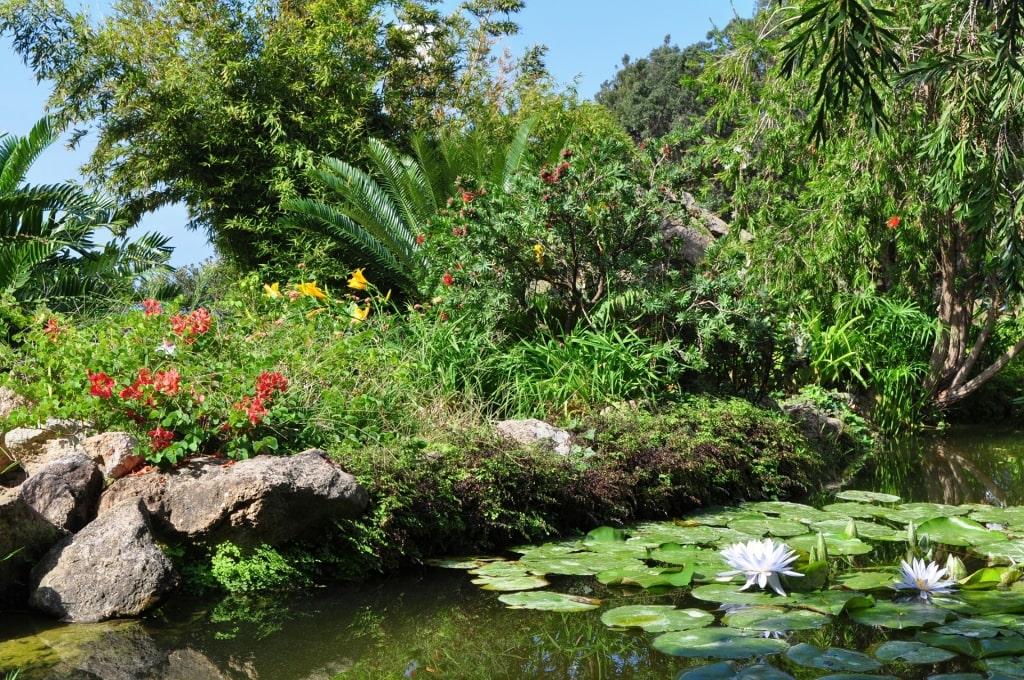
La Mortella, Ischia Island
Split across two parts—The Valley below and The Hill above—La Mortella is two acres of engrossing biodiversity set within a series of engaging themed areas (even one with fake crocodiles).
There are also a trio of tropical greenhouses with one entirely devoted to orchids (a hybrid orchid, created and named in honor of Lady Walton, can be sniffed within).
Other nameless one-off plants, their clusters of flowers fluttering in the warm coastal breezes, will taunt you with their resistance to Google searches. As with many of the finest gardens in Italy, La Mortella has a wonderful perspective over the turquoise-fringed Bay of Florio.
Read: Best Beaches In & Near Naples, Italy
Villa Borghese, Rome
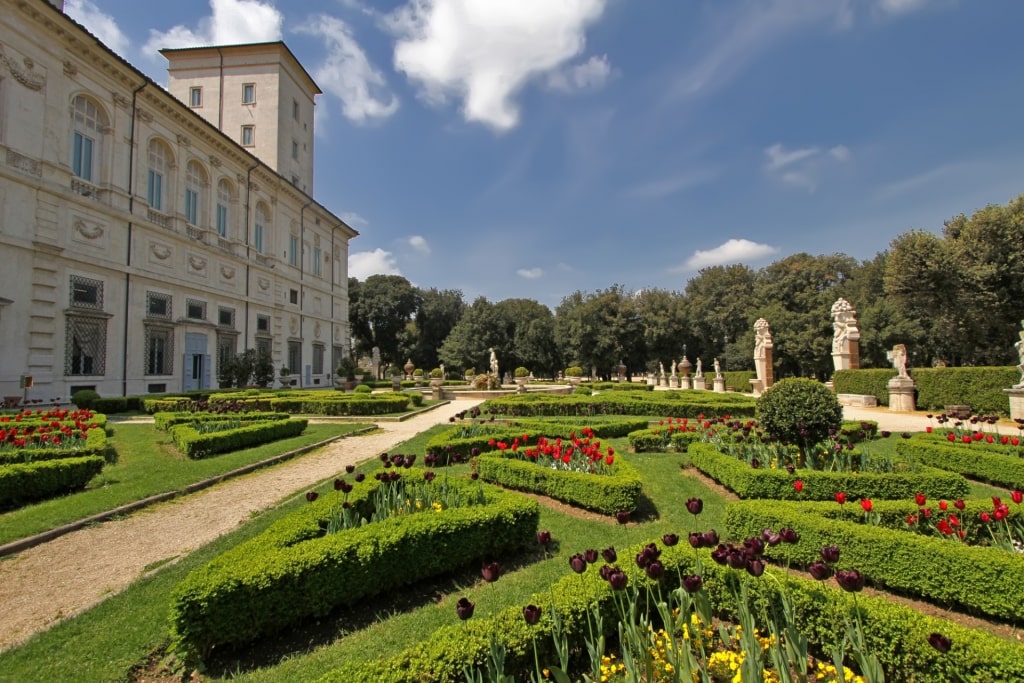
Villa Borghese, Rome
For many yet to visit Rome, the Spanish Steps is a staircase to nowhere, a famous sight untethered from anything but its own magnificence.
Happily, when you’ve finished ascending, descending, and looking out over one of the most beautiful cities in Italy, curiosity might overcome you about what’s at the top. Turn left, and you’ve found the entrance to the Villa Borghese Gardens.
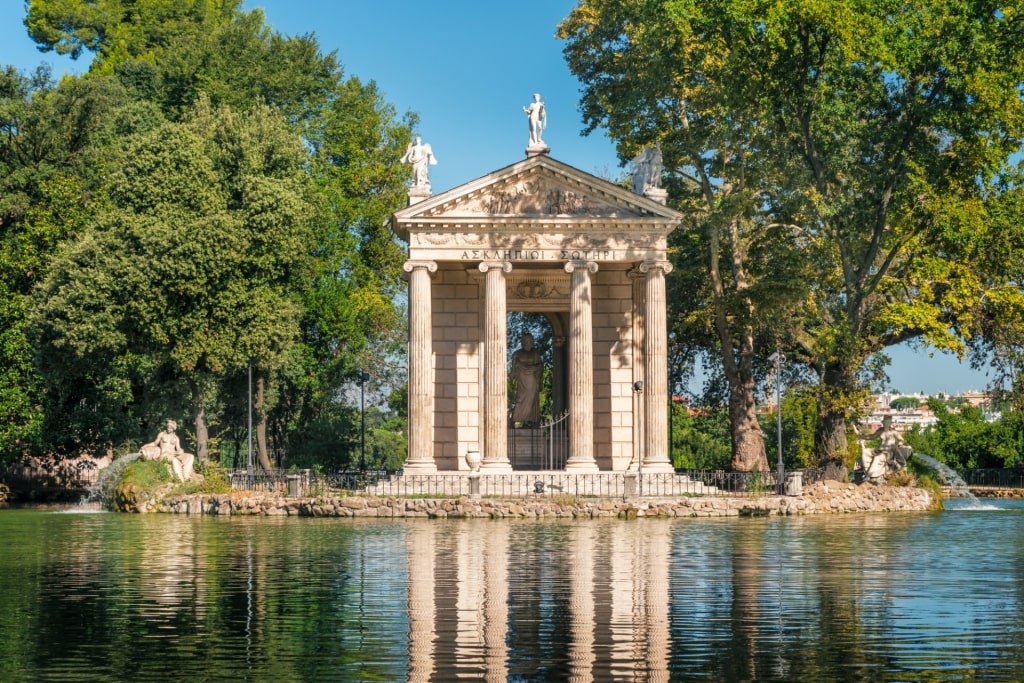
Temple of Asclepius in Villa Borghese, Rome
Rome’s third-largest and most central park and landscape garden, Villa Borghese is 80 hectares of natural beauty and endearing eclecticism. It was originally developed in 1606 out of an ancient vineyard to become the garden of Villa Borghese Pinciana—a building ostensibly created to house Cardinal Scipione Borghese’s impressive art collection.
Officially open to all since the start of the 20th century, the gardens offer, besides shady walks and picnic-ready grassy areas, the world’s smallest cinema in Cinema dei Piccoli (somehow squeezing 63 seats into a tiny cottage).
There’s also a zoo, a replica of Shakespeare’s Globe Theatre, and a 19th-century hydro chronometer (a water-powered clock).
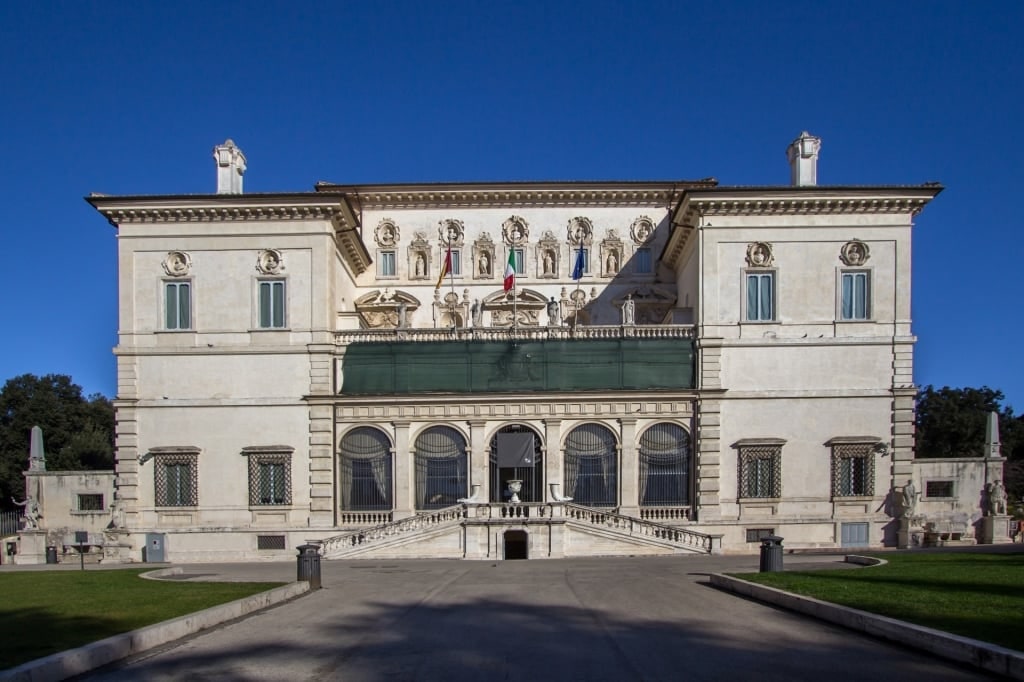
Borghese Gallery in Villa Borghese, Rome
Amid this eclectic collection of activities, the park is still a haven for art. Find your way to the Borghese Gallery by the Parco dei Daini entrance to browse the Berninis, Caravaggios and Raffaellos hung within.
Or just admire the stunning grounds with its follies, villas, and relaxing Romans. Hire a rowing boat and dock at the Temple of Asclepius, or look out across the city’s domes and murmurations of starlings from the Pincio Terrace.
Read: Fascinating Landmarks in Rome to Discover
Villa d’Este Gardens, Tivoli, near Rome
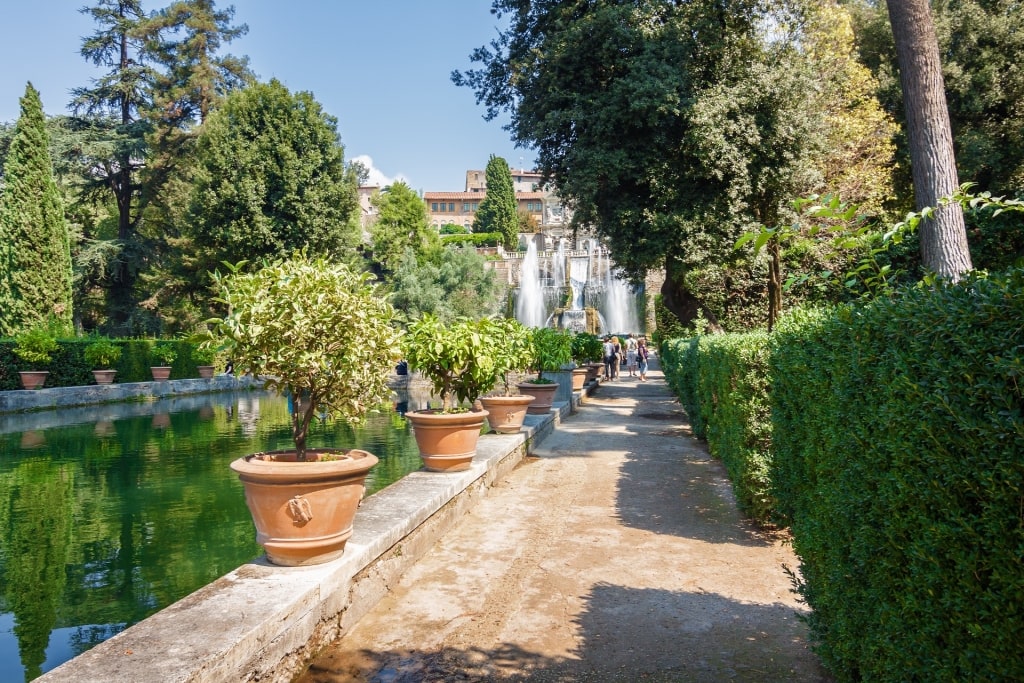
Villa d’Este Gardens in Tivoli, near Rome
Found in the city of Tivoli just under an hour east of Rome, Villa d’Este is home to another of the archetypal gardens of the Renaissance. UNESCO-stamped for its pioneering significance, this garden is almost as much water as it is leafy green alcove and bare-limbed statue.
The gardens were created in the 16th century by Pirro Ligorio, essentially to reflect the ego of the villa’s owner, Cardinal Ippolito II d’Este. And what an ego he had.
Greenery cascades elegantly downwards over an amphitheater to a central terrace. Everywhere you look are mythological references, glorious topiary, and columns.
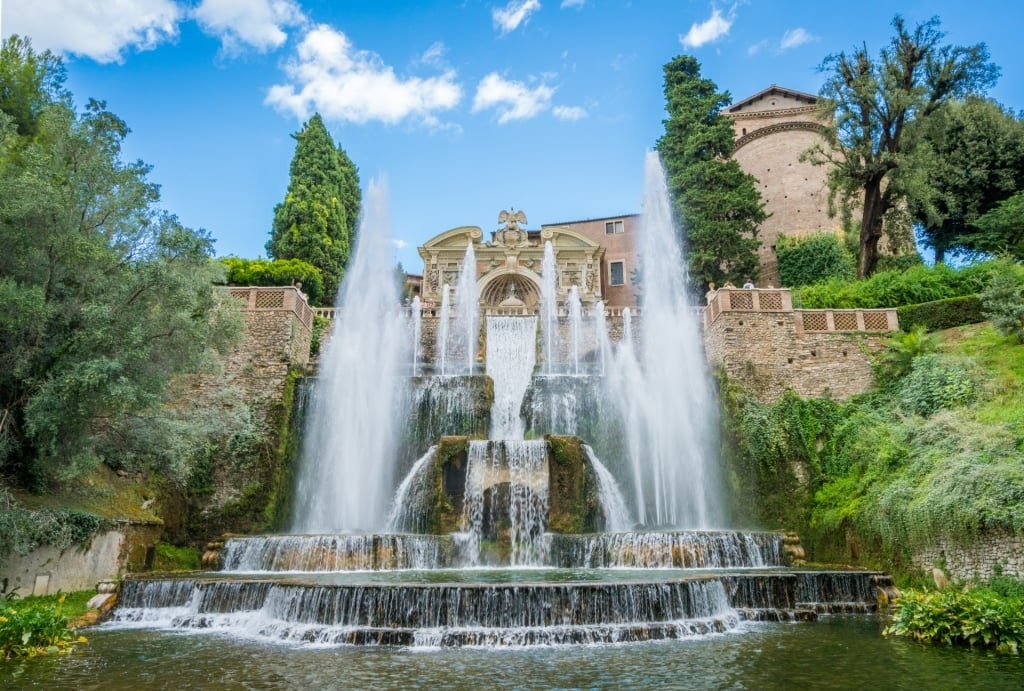
Neptune Fountain of Villa d’Este Gardens in Tivoli, near Rome
The entire magnificence of the gardens can only be taken in while standing at the central loggia. Otherwise, it has to be explored section by section, the design beckoning you to explore. What you’ll discover on your travels is that the Villa d’Este is particularly well endowed when it comes to water features.
A re-directed river pours through the 2,870 feet of canal that connect with the 51 fountains, 64 waterfalls, and 364 water jets spurting vigorously throughout (and assisted only by gravity). There’s even a musical water organ grandly housed in its own water castle.
Read: Best Day Trips From Rome
Giardini Margherita, Bologna
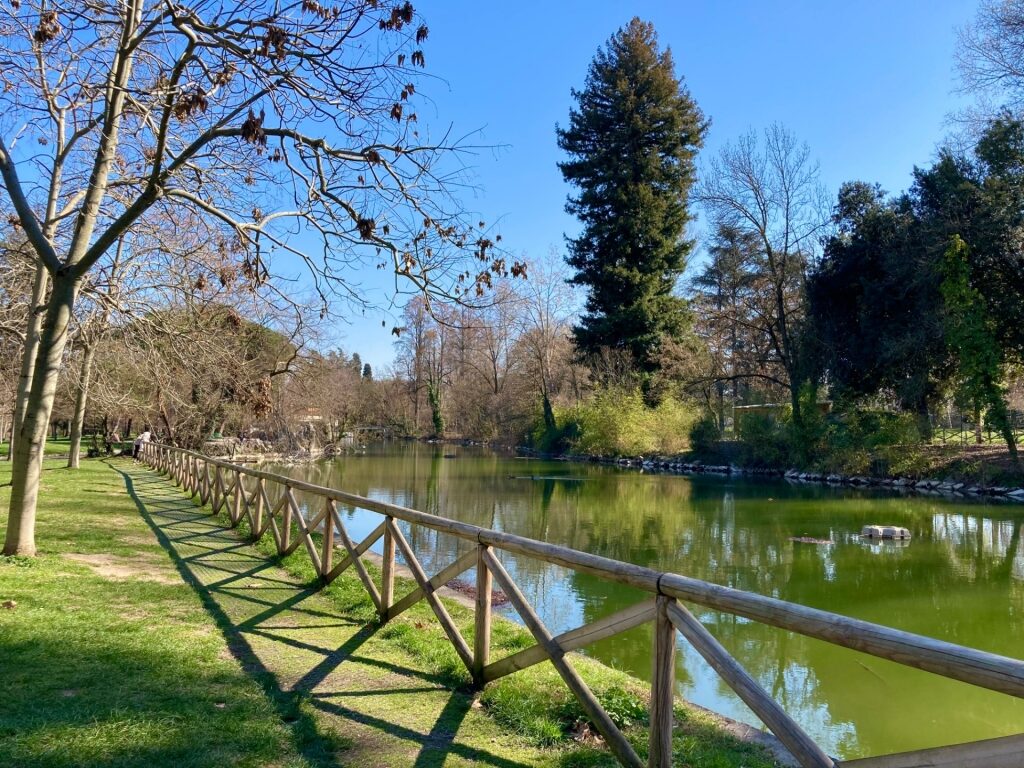
Giardini Margherita, Bologna
While a relatively low-key example among the gardens in Italy, Giardini Margherita combines the verdant lyricism of an English Romantic park with the intimacy of a community hub.
Just south of the city center, Giardini Margherita—Bologna’s largest park—was opened in the late 19th century and set on land that used to belong to a convent. The designers created a public space based on Milan’s spacious Parco Sempione.
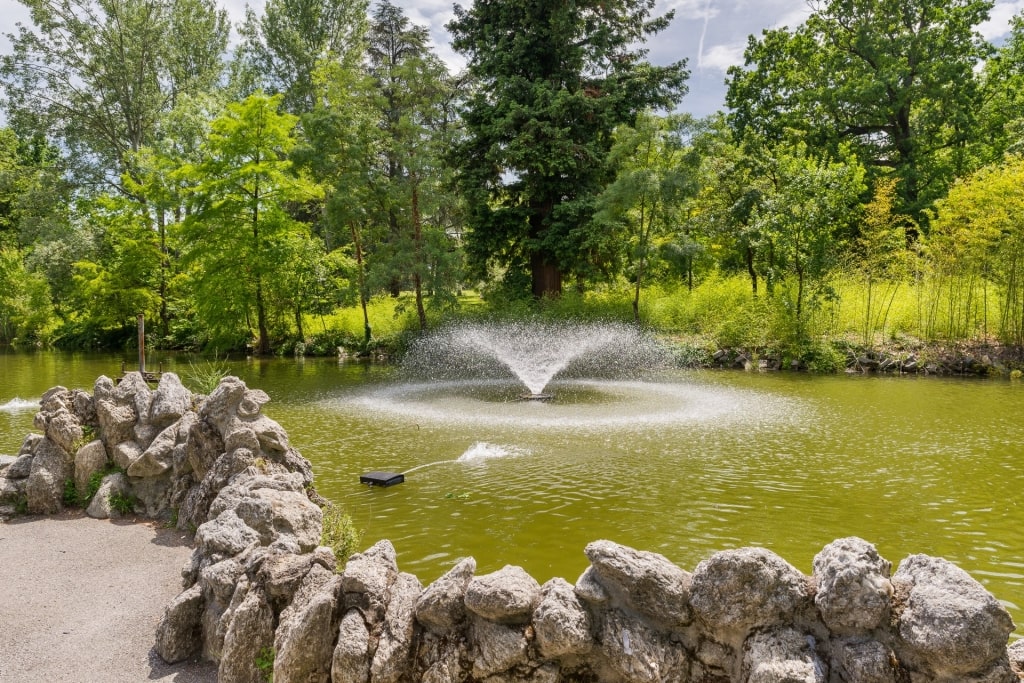
Giardini Margherita, Bologna
Amid its tree-lined pathways, you’ll discover a retreat from the thrum and jostle of the city center. The park has a watchful turtle colony in its lake, an astronomical observatory, and a travertine grave marking the spot where an Etruscan burial ground was discovered during the creation of the space.
Amid those landmarks, pop-up Italian markets draw curious joggers to their flowers, produce, or clothes (sun hats in summer, fleecy gloves in winter).
The park is perhaps most beautiful in autumn when the leaves ignite with a display as vivid as that of New England. Admire it from the Chalet bar on the island with an Aperol spritz.
Villa Celimontana, Rome
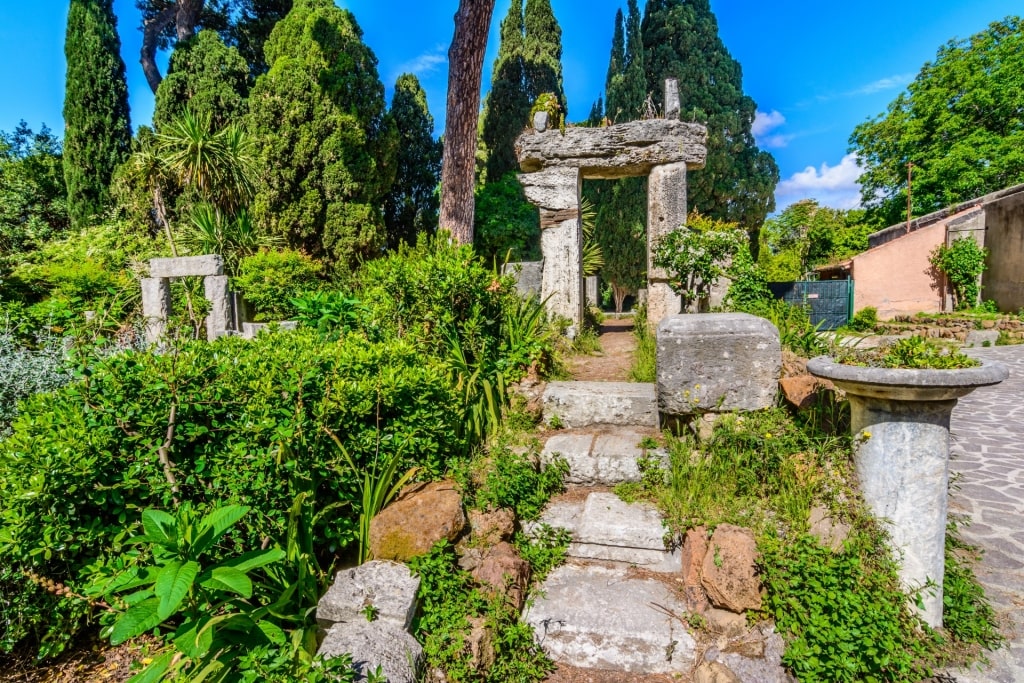
Villa Celimontana, Rome
Spread majestically across the southern slopes of the Caelian Hill near the Circus Maximus, Rome’s Villa Celimontana is one of the most inviting gardens in Italy.
It’s also sacred land. The lore reaches back to the second king of Rome—Numa Pompilius—who, so the story goes, met the nymph Egeria here. She went on to become his supernatural consort and counselor. After the mythological matchmaking, the site became a vineyard before being purchased in 1553 by Italian nobleman Giacomo Mattei.
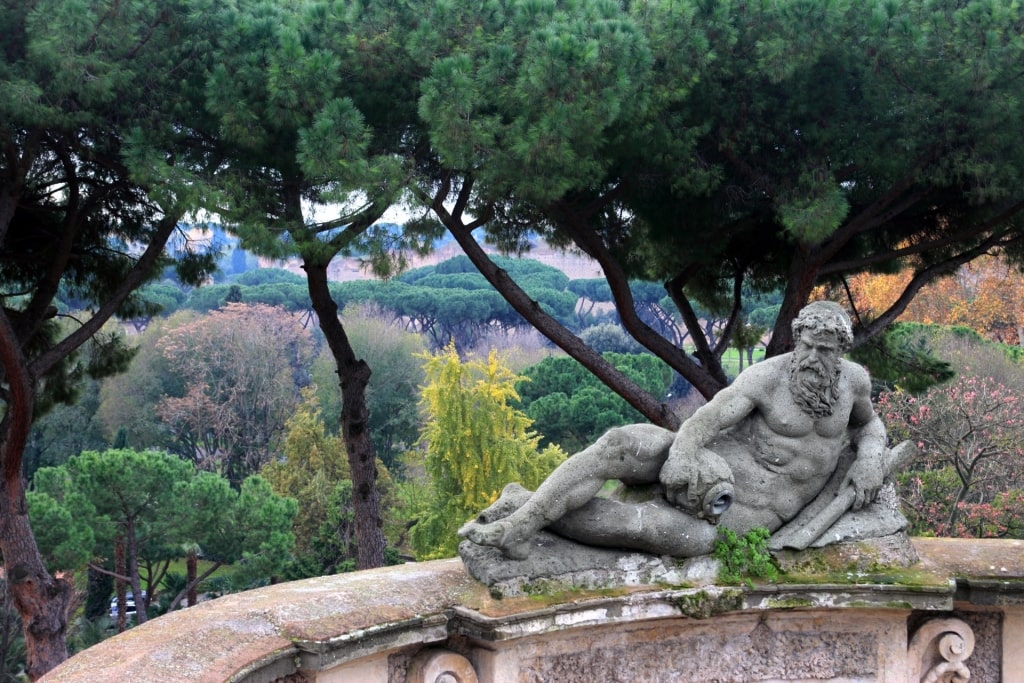
Villa Celimontana, Rome
The Mattei family built up the villa and its aromatic, bloom-filled gardens until their fortunes turned in the late 18th century. The villa then passed through the hands of various high society figures, including Princess Marianne of the Netherlands.
Today, it’s the home of the Italian Geographical Society. A visit makes it immediately clear why it’s been such a sought-after property. Besides the regal villa and gardens, it’s close to a number of major historical sites, with stunning views over the ruins of the Baths of Caracalla and Rome itself.
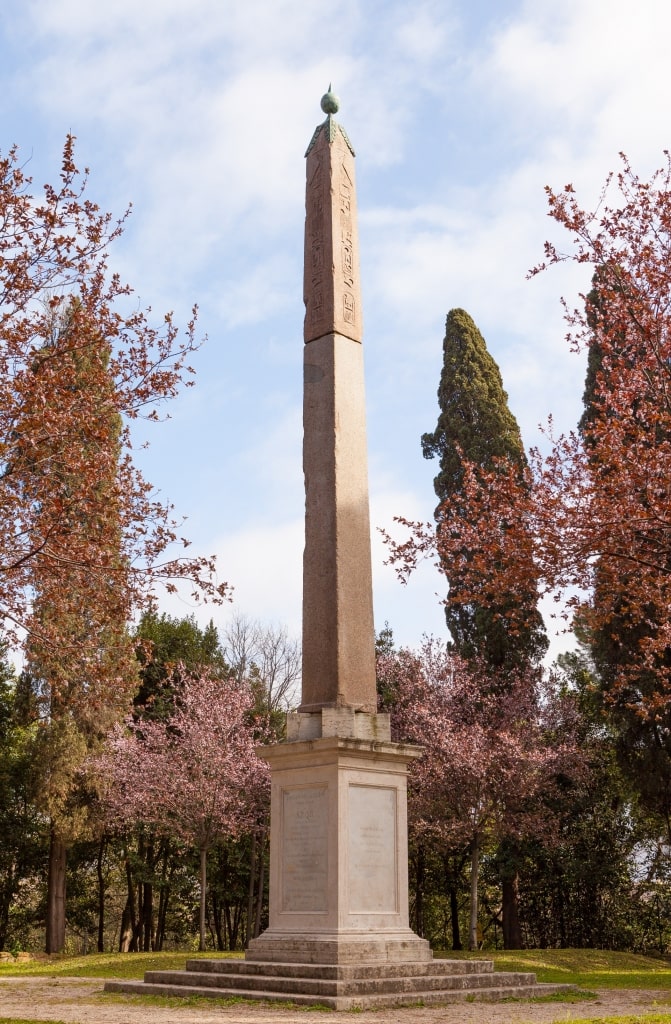
Obelisk in Villa Celimontana, Rome
Wandering its chalky pathways, you’ll see pieces of carved marble (originally antiques belonging to the Mattei family). There’s also a towering Egyptian obelisk with a crowning globe that, rumor goes, holds the ashes of the Emperor Augustus.
Read: Three Days in Rome
Miramare Castle Park, Trieste
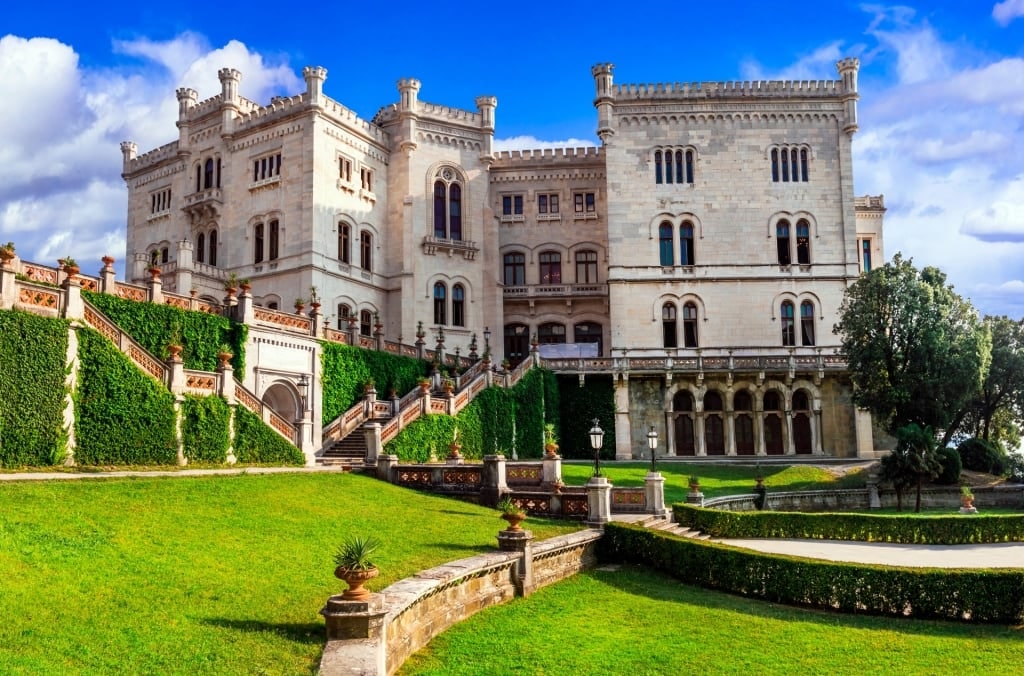
Miramare Castle Park, Trieste
Dominating Trieste’s Grignano promontory is the shining white Miramare Castle and its sprawling grounds.
The Italian castle was built in the mid-19th century by Archduke Ferdinand Maximilian, the Austrian having chosen the spot after sheltering his boat there during a storm. Today, this former royal residence, which retains all of its original furnishings, is open to all of those interested in how to make their own homes more Habsburgian.
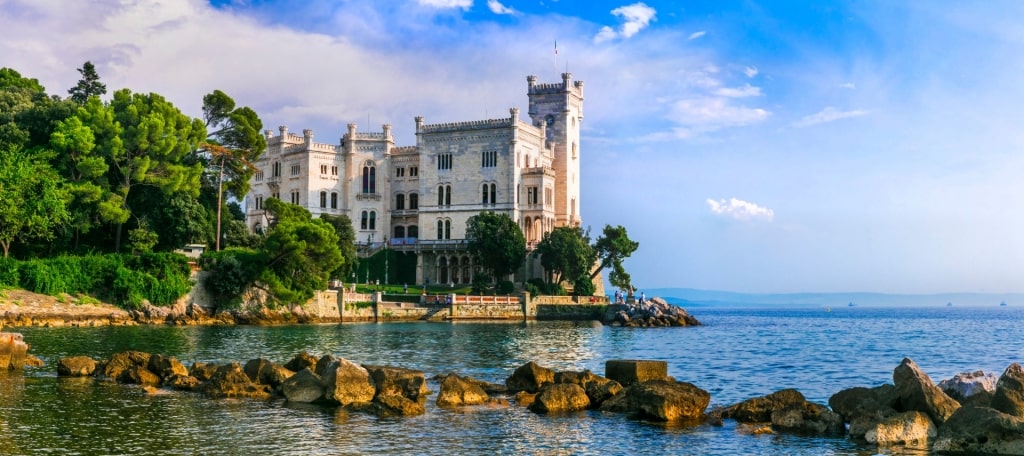
Miramare Castle Park, Trieste
Miramare is also one of the most famous of the grand Italian gardens. Its idyllic seaside setting is the backdrop to 54 acres of verdant English-style design.
Its plant profile, too, is particularly interesting, thanks to the archduke’s botanical bent. The collection of northern and Mediterranean specimens was hand-collected by the archduke himself as he cruised the world aboard his frigate Novara.
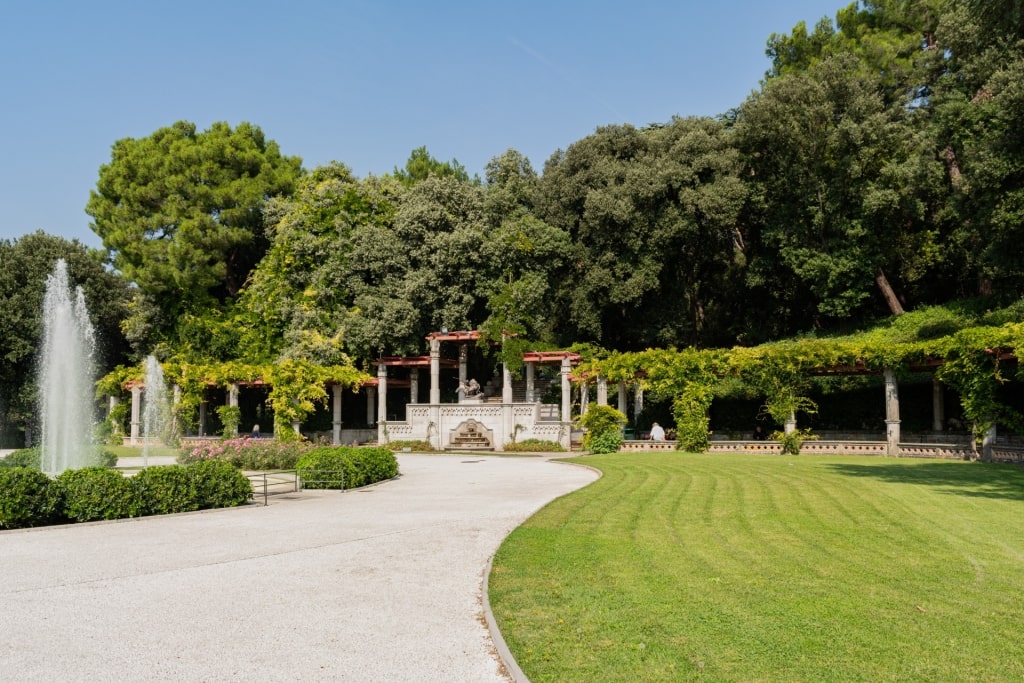
Miramare Castle Park, Trieste
Beneath the generous canopy of the Lebanese cedars, Spanish spruce, and giant sequoia, you’ll also come across cannons, bubbling fountains, and a ruined chapel for added romantic interest. Stop for a chilled glass of prosecco at Caffe Massimiliano, conveniently located in the heart of the greenery.
Read: Best Italian Honeymoon Destinations
Rose Gardens, Rome
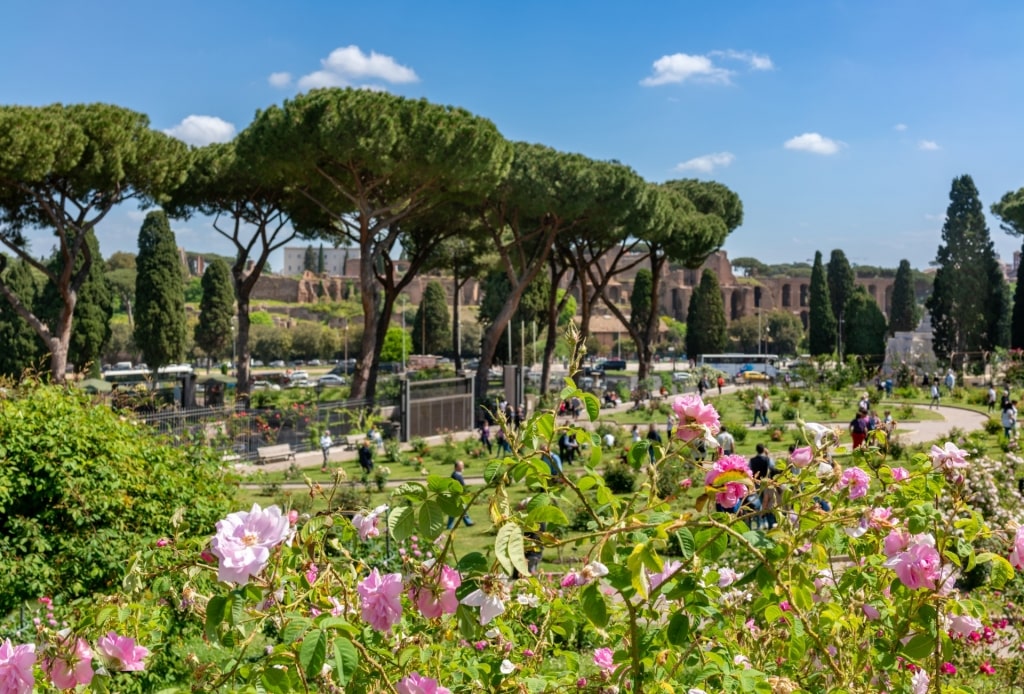
Rose Gardens, Rome
One of Italy’s more recently created gardens, the Roseto Communale distinguishes itself by not being attached to a wealthy family or stupendous villa.
Perched on the Aventine Hill close to the Circus Maximus, this pine-shaded rose garden is currently in its second site on what was Rome’s Jewish cemetery. Its original iteration, created in the 1930s by an American countess, was a casualty of World War II.
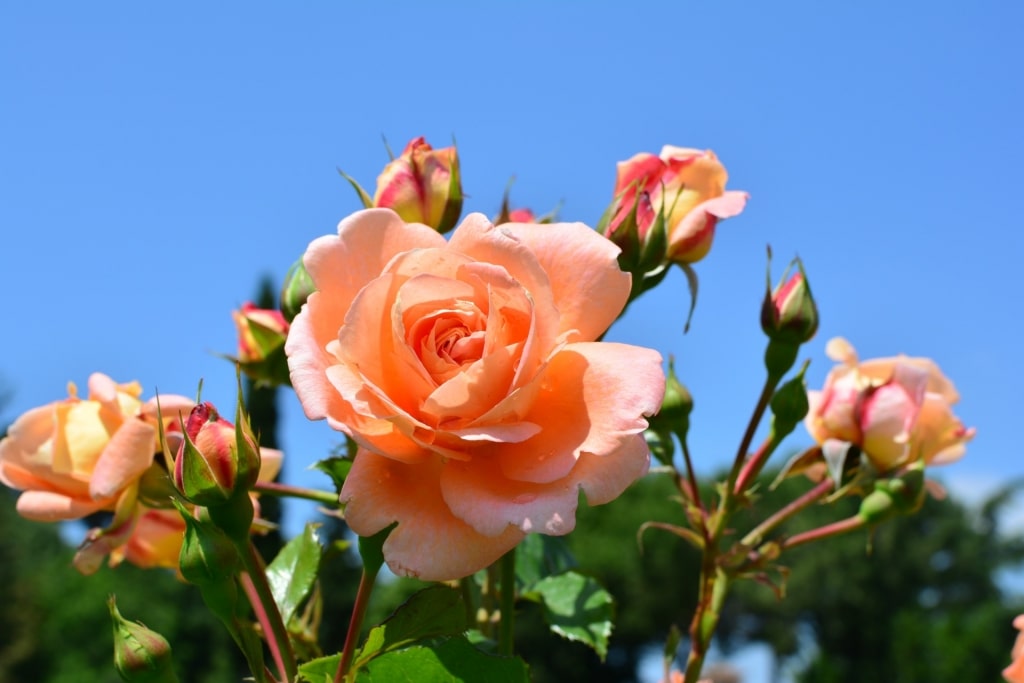
Rose
Explore Rome off the beaten path and wander the paths that trace Jewish symbols around the 1,200 varieties of roses found in this popular spot, where you’ll be unofficially judging one of the city’s most hotly contested competitions.
Every May, an annual judging takes place here to decide which is the Eternal City’s most beautiful rose.
Villa Durazzo, Santa Margherita
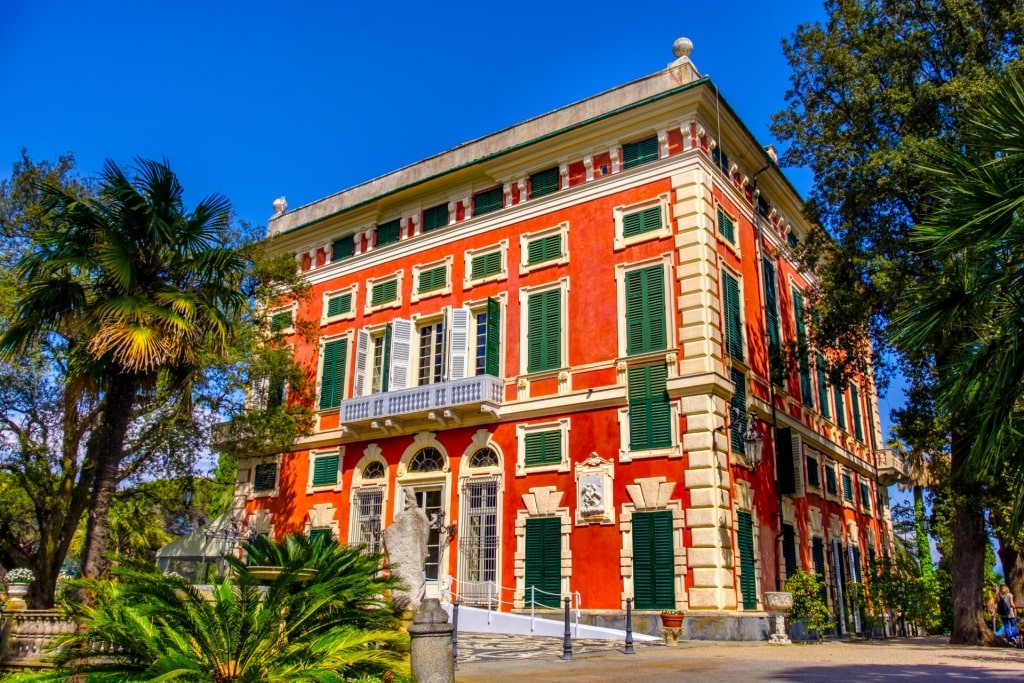
Villa Durazzo, Santa Margherita
In sunny Liguria, neighboring the French Riviera, you’ll find Villa Durazzo glowing a peachy pink in the region’s reliable sunshine.
Planted in seductive Santa Margherita on the world-famous Portofino peninsula, Villa Durazzo (comprising a 16th-century castle and two villas) already benefits from an astoundingly good location. Boosting its appeal even further are its impressive and varied gardens—officially recognized as one of the “Great Italian Gardens”.
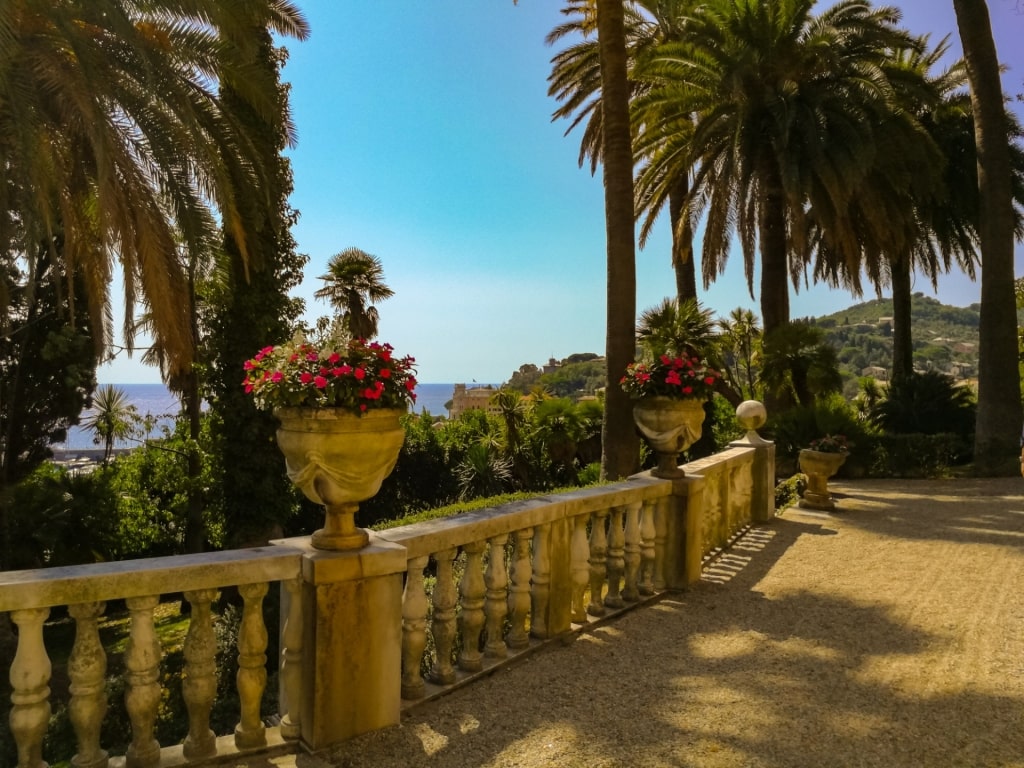
Villa Durazzo, Santa Margherita
Divided into four distinct parts, the gardens offer both the unrelenting control and dazzling design of the Italian style alongside the affected dishevelment of the Romantic English approach. The Gulf of Tigullio glinting in the background attempts to distract you from the fulsome camellias, minty scent of the camphor trees, and strict angles of the box hedges.
The oldest section is the citrus garden, wreathing the villa’s inviting terrace with scent. Beneath the lemons and the oranges, you’ll also detect the whiff of espresso here emanating from the café.
Read: Most Romantic Places in Italy
Giardino degli Aranci, Rome
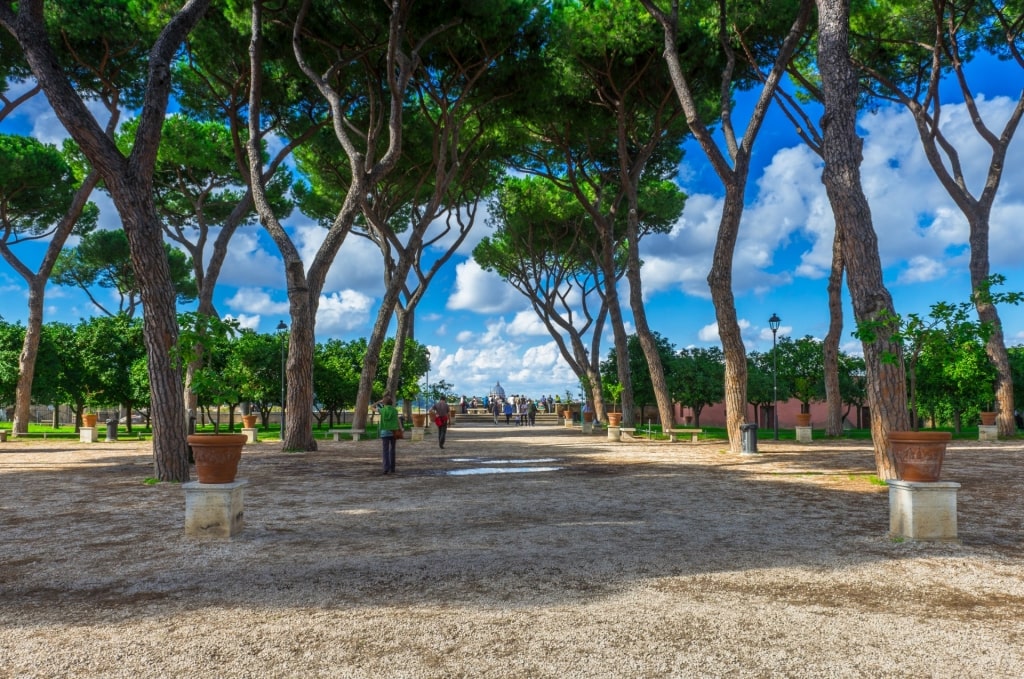
Giardino degli Aranci, Rome
Whether you come for the scent of the orange trees filling this space with their fruit-filled boughs or for the legendary sunset views over Rome, the Giardino Degli Aranci (Orange Garden) is one of those famous Italian gardens that—despite its fame—somehow feels intimately yours.
This simple spot has been in existence for over a millennium, since it was first created in the 10th century and locked away behind the walls of the Savelli family fortress. Only in 1932 did this area (with some stoic stretches of Savelli fortress wall still in evidence) become a park, the alterations for its new public purpose overseen by the architect Raffaele de Vico.
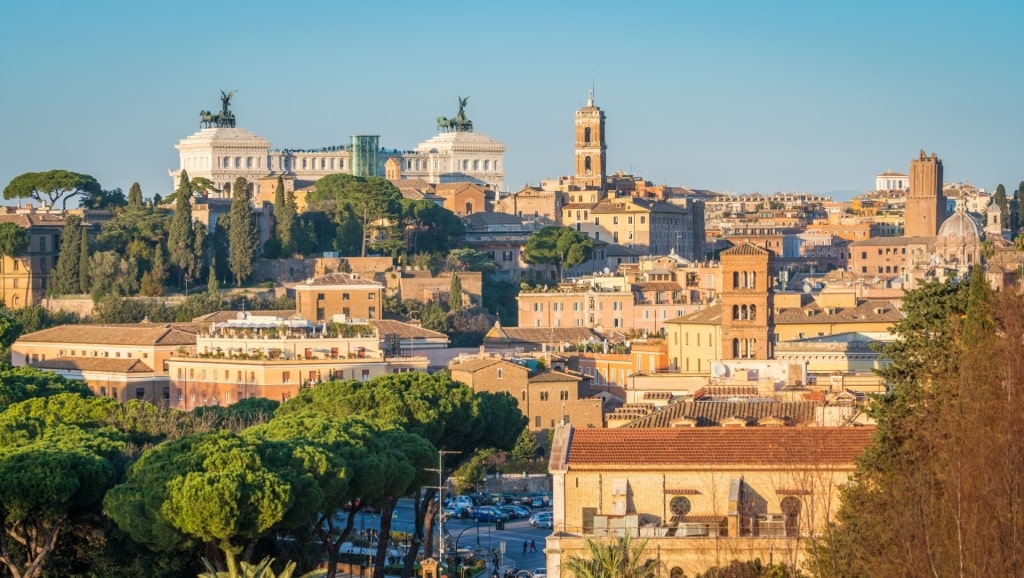
View from Giardino degli Aranci, Rome
This simple, relatively unadorned space is oriented towards the enjoyment of the peerless view. The wide central avenue, lined by umbrella pines and white stone benches, leads to the Terrazza Belvedere Avenino that projects out towards the city.
The gravel crunches beneath your feet as you approach the view with St. Peter’s Basilica the focus, its grand dome aflame in the rays of the setting sun.
As you walk back, on to dinner, the citrus scent heavy in the gathering dusk, the authorities ask that you please smell, but do not pick, the famous, juicy oranges.
Read: Italy With Teens: Best Things to See & Do

Italy
See these ravishingly beautiful gardens in Italy for yourself (while definitely not picking the fruit) on a cruise to the Bel Paese and discover its romantic follies, rampant bougainvillea, and lakeside Aperol bars. Browse our cruises to Italy and book a memorable vacation to a destination of effortless glamor.
